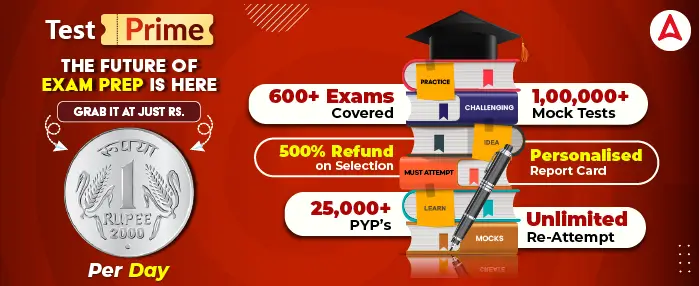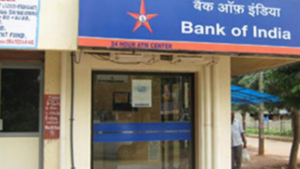Preparing for the PNB SO Exam 2025 requires a solid understanding of Quantitative Aptitude, which plays a crucial role in the selection process. This section tests not only your numerical ability but also your speed and accuracy under pressure. To help you gain an edge, we have compiled a detailed list of essential math formulas that will boost your problem-solving efficiency. Whether it’s simplification, arithmetic, algebra, or geometry, mastering these formulas is the key to scoring high in the exam.
Important Formulas and Concepts for PNB SO Exam
- Number System
- Natural Numbers (N): {1, 2, 3, 4, …}
- Whole Numbers (W): {0, 1, 2, 3, …}
- Integers (Z): {…, -3, -2, -1, 0, 1, 2, 3, …}
- Rational Numbers (Q): Numbers expressible as p/q, where q ≠ 0
- Irrational Numbers: Numbers not expressible as p/q (e.g., √2, π)
- Simplification & Approximation
- Apply BODMAS rules: Brackets, Orders, Division, Multiplication, Addition, Subtraction
- Use Vedic Math techniques for faster calculations
- Approximate complex fractions to nearest values for quick estimations
- Percentage
- Basic Formula: (Part / Whole) × 100
- Conversion: x% of y = (x/100) × y
- Shortcut: a% of b = b% of a
- Ratio & Proportion
- Ratio: a : b = a/b
- Proportion: a : b :: c : d ⇒ a/b = c/d
- Properties:
- Invertendo: a/b = c/d ⇒ b/a = d/c
- Alternendo: a/b = c/d ⇒ a/c = b/d
- Componendo: a/b = c/d ⇒ (a + b)/b = (c + d)/d
- Dividendo: a/b = c/d ⇒ (a – b)/b = (c – d)/d
- Profit, Loss & Discount
- Profit: Selling Price (SP) – Cost Price (CP)
- Loss: CP – SP
- Profit%: (Profit / CP) × 100
- Loss%: (Loss / CP) × 100
- Discount: Marked Price – SP
- Discount%: (Discount / Marked Price) × 100
- Simple & Compound Interest
- Simple Interest (SI): (P × R × T) / 100
- Compound Interest (CI): P × [(1 + R/100)2T– 1]
- Difference between CI and SI for 2 years: P × (R/100)2
- Time, Speed & Distance
- Speed: Distance / Time
- Time: Distance / Speed
- Distance: Speed × Time
- Conversions:
- 1 km/hr = 5/18 m/sec
- 1 m/sec = 18/5 km/hr
- Average Speed: (2 × S1 × S2) / (S1 + S2)
- Time & Work
- Work Done: Work = Time × Rate
- If A can do a work in x days, then A’s 1 day work = 1/x
- Combined Work: If A and B can do a work in x and y days respectively, then together they can complete the work in (xy)/(x + y) days
- Pipes & Cisterns
- Filling Rate: If a pipe fills a tank in x hours, then part filled in 1 hour = 1/x
- Emptying Rate: If a pipe empties a tank in y hours, then part emptied in 1 hour = 1/y
- Combined Rate: If one pipe fills and another empties, net part filled in 1 hour = (1/x) – (1/y)
- Boats & Streams
- Downstream Speed: Speed of boat + Speed of stream
- Upstream Speed: Speed of boat – Speed of stream
- Speed of Boat in Still Water: (Downstream Speed + Upstream Speed) / 2
- Speed of Stream: (Downstream Speed – Upstream Speed) / 2
- Averages
- Average: Sum of observations / Number of observations
- Total Sum: Average × Number of observations
- Mixtures & Alligation
- Alligation Rule: (Quantity of cheaper / Quantity of dearer) = (CP dearer – Mean Price) / (Mean Price – CP cheaper)
- Mensuration
- 2D Figures:
- Rectangle Area: Length × Breadth
- Square Area: Side²
- Circle Area: π × r²
- 3D Figures:
- Cube Volume: Side³
- Cuboid Volume: Length × Breadth × Height
- Cylinder Volume: π × r² × h
- Permutation & Combination
- Permutation (nPr): n! / (n – r)!
- Combination (nCr): n! / [r! × (n – r)!]
- Probability
- Probability of an event: Number of favorable outcomes / Total number of outcomes
- Complementary Event: P(A’) = 1 – P(A)
- Quadratic Equations
- Standard Form: ax² + bx + c = 0
- Roots: x = [-b ± √(b² – 4ac)] / (2a)
- Data Interpretation
- Types: Tables, Bar Graphs, Line Graphs, Pie Charts
- Key Skills: Quick calculations, percentage analysis, ratio comparisons
| Related Posts |
||
| PNB SO Admit Card 2025 | PNB SO Recruitment 2025 | |
| PNB SO Salary | PNB SO Syllabus | |
| PNB SO Cut Off | PNB SO Previous Year Paper | |




 Bank of India Credit Officer Salary 2026...
Bank of India Credit Officer Salary 2026...
 Cloze Test Approach – How to Score Full ...
Cloze Test Approach – How to Score Full ...
 Bank of India Credit Officer Syllabus 20...
Bank of India Credit Officer Syllabus 20...







